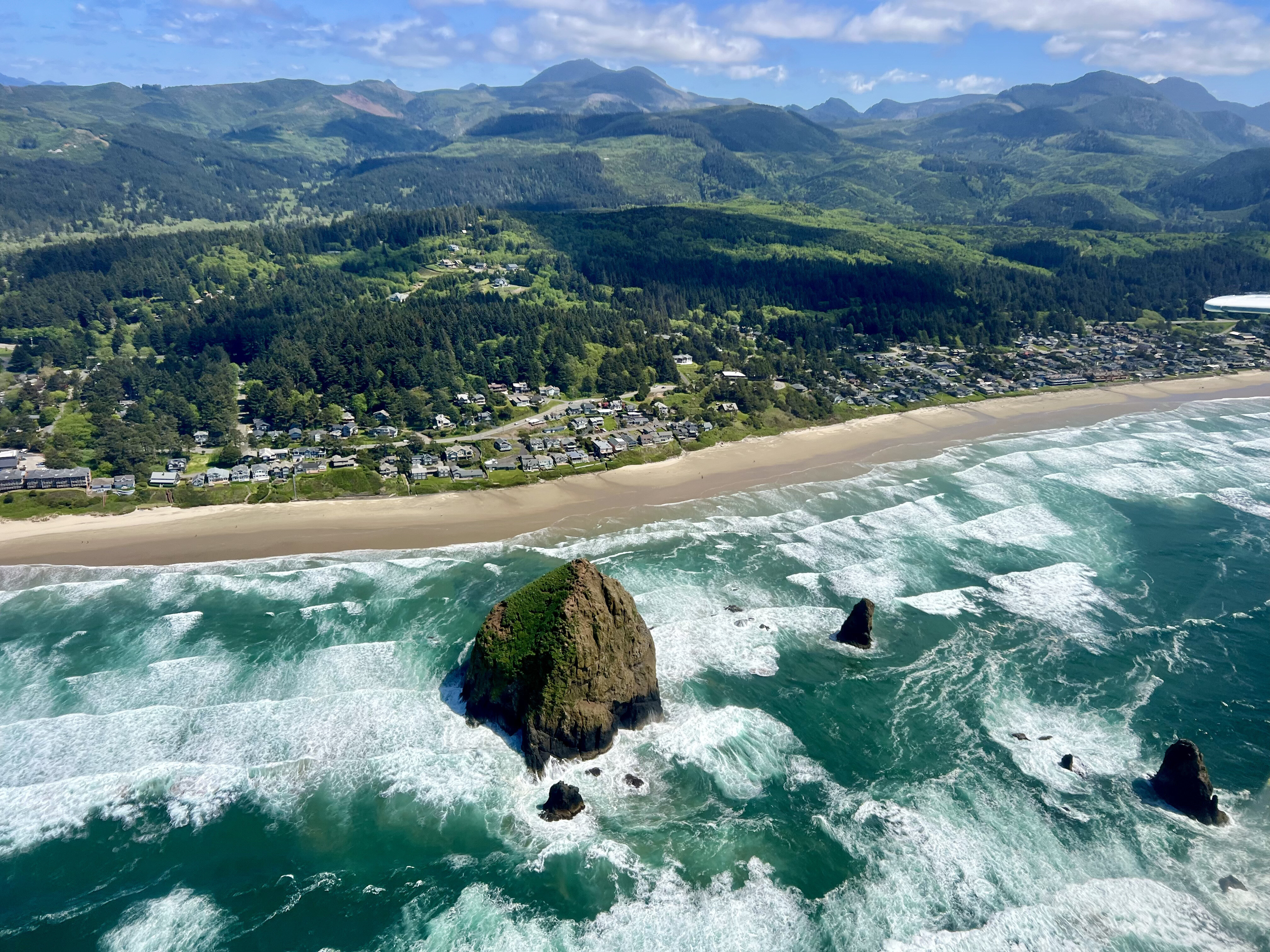
04.08.25
Riprap Rejected: How Oregon Communities Are Defending Beaches from Harmful Armoring
By Kaia HazardSurfrider’s North Coast and Newport Chapters are celebrating two recent wins for Oregon’s public beaches, with decisions to deny riprap applications in both Tillicum Beach and Cannon Beach. Surfrider, along with other community groups and local beach lovers, advocate against shoreline armoring regularly, highlighting the destructive impact they have on our beaches and pushing for beach-friendly alternatives. The winter months see a higher volume of applications for riprap coming through the Oregon Parks and Recreation Department (OPRD), and in some cases, municipalities, when coastal erosion is more evident due to winter storms. However, these applications often lack thorough analysis of alternatives to armoring, and fail to mitigate negative impacts to the public shore.
Tillicum Beach
On Tillicum Beach, between Waldport and Yachats, OPRD denied an application for riprap along a 5 acre property. Interestingly, there is a cabin on the property, built in the 1960s, which makes it eligible for shoreline armoring through land use Goal 18. Goal 18 is the statewide land use planning goal that protects beaches and dunes from development and prohibits shoreline armoring in post-1977 development. However, this cabin was built well back from the shoreline out of danger from the eroding bluff and mighty Pacific. A new 4,700 sq ft home, built in 2001, was built far too close to the shoreline, despite their own application stating that erosion of approximately a half foot per year since 1997 has been observed in this area.
The glaring issue with this application, as is commonly seen, is that it fails to adequately analyze alternatives to shoreline armoring, such as beach-friendly, nature-based erosion control measures, or relocation of the home to elsewhere on the 5 acre lot. In their decision, OPRD cites our comment, agreeing that this requirement had not been met, and pointing out the application does not include a cost estimate for relocation, despite the applicant claiming that relocation would be cost prohibitive. The decision followed a public hearing in January, where Surfrider Newport volunteers and central coast beach advocates testified and wrote in comments urging the state to factor in the harmful impacts of the proposed riprap structure on the public’s beach. Read more about the case, OPRD’s report, and our campaign and comments here.
Cannon Beach
At the same time, Surfrider’s North Coast chapter joined concerned citizens and advocates from Friends of the Dunes to oppose a riprap wall in the Tolovana area of Cannon Beach–a case which just recently saw a resolution after four months of deliberation, an appeal, and a deadlocked city council. Following two public hearings late last year, the Cannon Beach Planning Commission denied the application.
However, in January, the homeowners appealed this decision to the City Council, which had recently seen two positions change hands. Councillor Ostrander, new to the City Council, had been on the Planning Commission during the initial hearings, and had voted to pass the application and armor the shoreline. Given this conflict, he recused himself, leaving four City Councillors to deliberate on the application. At the final hearing, the City Council vote ended up deadlocked, resulting in the appeal failing and the Planning Commission’s denial becoming the City’s final decision. Dig into the details about this case, the staff report, and our campaign and comments here.
“In this situation, the ultimate cost to the public will be the loss of the beach under the revetment, as well as the long term loss of the beach in front of the rip-rap revetment due to beach scouring and lack of sand replenishment. This carries a significant long-term cost to the public in lost tourism, safety during high tides and sneaker waves, enjoyment of wildlife that lives within the beach/due ecosystem, and mental/emotional well-being.”
-Excerpt from City of Cannon Beach Decision
 Armoring on Lincoln Beach has cut off access along the public shoreline
Armoring on Lincoln Beach has cut off access along the public shoreline
Turning the Tide
These two riprap denials represent a broader movement toward sustainable coastal management. Both cases emphasize the importance of protecting Oregon’s public beaches from the destructive consequences of hard-armoring methods. Unfortunately, some Oregon beaches are already experiencing the consequences of riprap– check out our previous blog to see an aerial view of beach access being lost to hard armoring. These recent riprap denials challenge the status quo of relying on concrete and rocks to protect private property and push for alternative, nature-based solutions that work with the coastline rather than against it.
We applaud the local beach advocates who tirelessly work to oppose armoring of Oregon’s precious coastline, and highlight the need for more responsible development practices along the coast—practices that prioritize the health of ecosystems, access for the public, and long-term solutions that strengthen our coastal communities.
As we add these two cases to the growing number of riprap denials, it shows that coastal communities are increasingly rejecting harmful armoring projects in favor of approaches that safeguard both private property and the public’s right to enjoy the coastline. These decisions stand as important reminders that the Oregon Coast belongs to everyone, and it’s up to all of us to ensure it remains as pristine and accessible as it is today.
